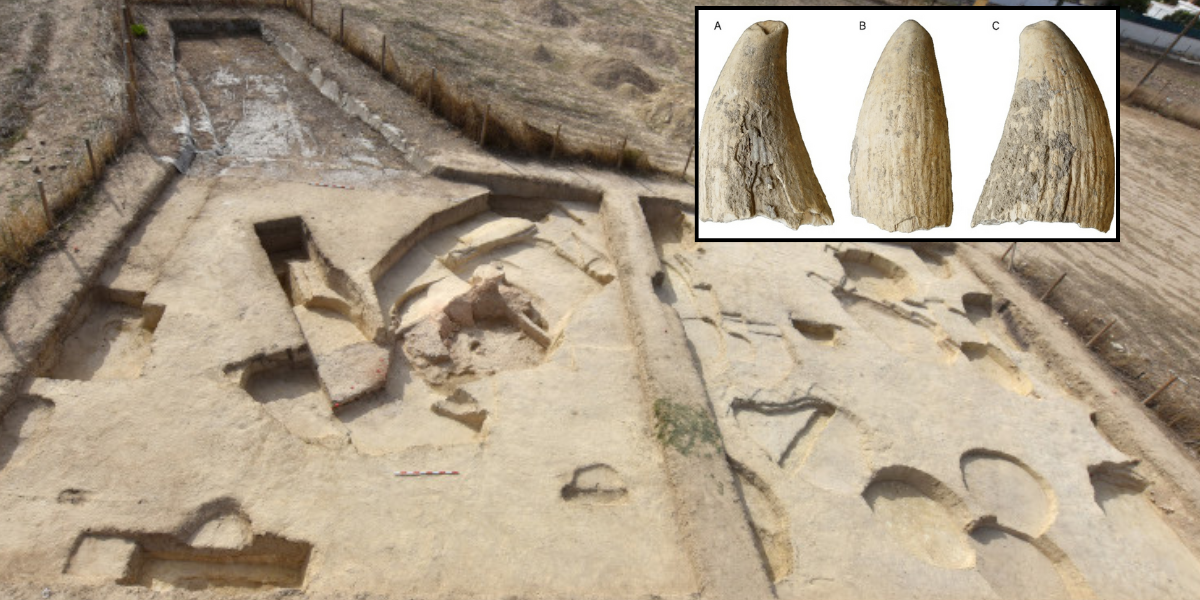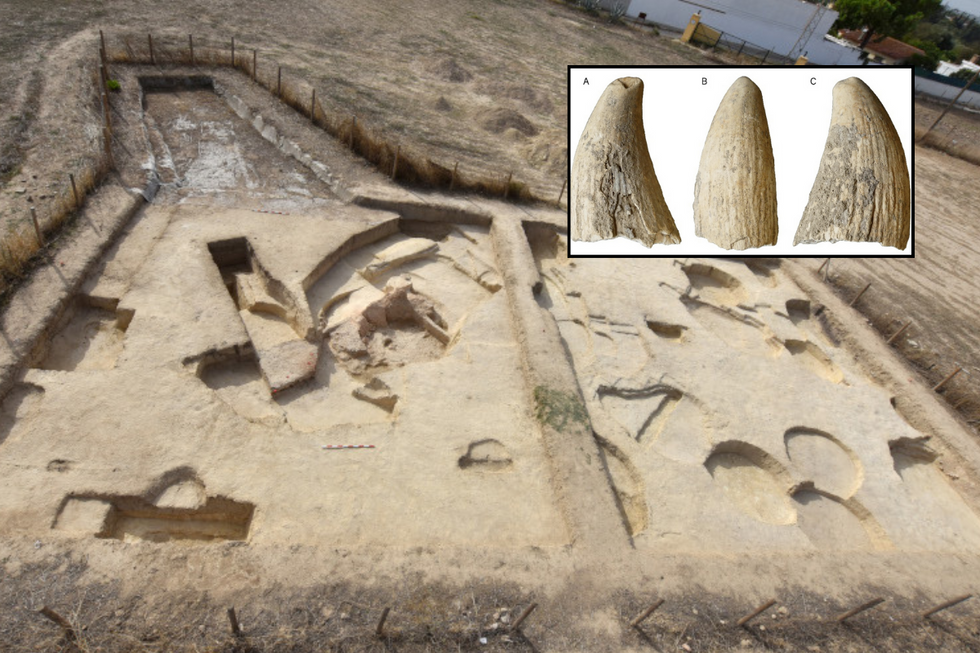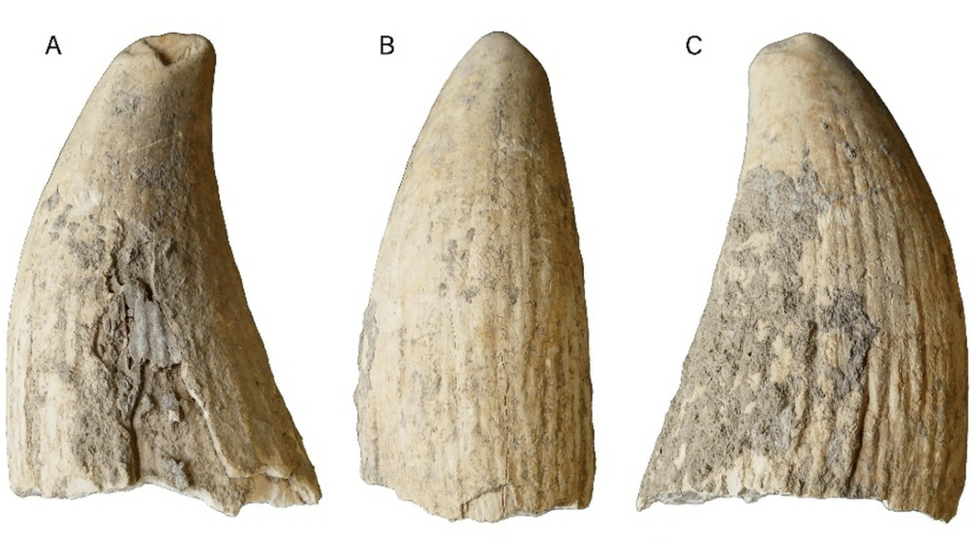



A sperm whale tooth discovered at a key archaeological site in southwest Spain has provided new insights into the lives of ancient Iberian people who inhabited the region more than 4,000 years ago.
The fossil, unearthed in 2018, represents the first whale tooth from the Copper Age period found in Iberia, according to new research published in PLOS One.
The discovery at what researchers describe as a "mega-village" offers a rare glimpse into how prehistoric coastal communities utilised marine resources.
The tooth was found at the Valencina site, where Copper Age people lived between 5,300 and 4,150 years ago in what was then a coastal settlement.

The tooth was found at the site in southern Spain
GERMAN ARCHAEOLOGICAL INSTITUTE OF MADRID/PLOS ONE
The tooth measures 17 centimetres in height and seven centimetres in width, weighing more than half a kilogram.
Analysis revealed it belonged to an adult sperm whale and bore distinctive marks from its time in the ocean.
The fossil showed erosion from marine worms and barnacles, along with what researchers identified as probable shark bite marks.
These features suggest the tooth spent considerable time on the seafloor before washing ashore.

A section of the tooth
PLOS ONE
Scientists also discovered clear evidence of human modification, including drilled holes and cut marks that could not have occurred naturally.
The research team concluded the whale likely died of natural causes, with its body sinking to the ocean floor before one of its teeth eventually reached the ancient shoreline.
The ancient craftspeople who discovered the tooth likely collected it from the shoreline and carefully worked it to create personal ornaments or items of symbolic significance.
Evidence suggests the tooth was deliberately buried after being modified. The fossil's surface shows additional wear and tear, along with a hard crust that formed during its burial, indicating intentional placement rather than accidental loss.
This practice reflects the broader use of ivory in prehistoric societies for creating ornaments, musical instruments and sculptures dating back to the Old Stone Age, which began nearly 40,000 years ago.
The tooth's "striking appearance, durability, and strength" made ivory materials valuable for trade and sociocultural activities in ancient communities. The discovery highlights a significant gap in archaeological understanding of prehistoric ivory use.
Whilst elephant ivory from Old Stone Age and Copper Age societies in southern Spain has been well documented, the use of marine mammal materials remains largely unexplored.
"Although no ivory artefact has yet been diagnosed as coming from a sperm whale tooth, recent finds of ivory of marine origin in European archaeological contexts have brought a new focus to the study of the use of marine resources by prehistoric societies," the study noted.
